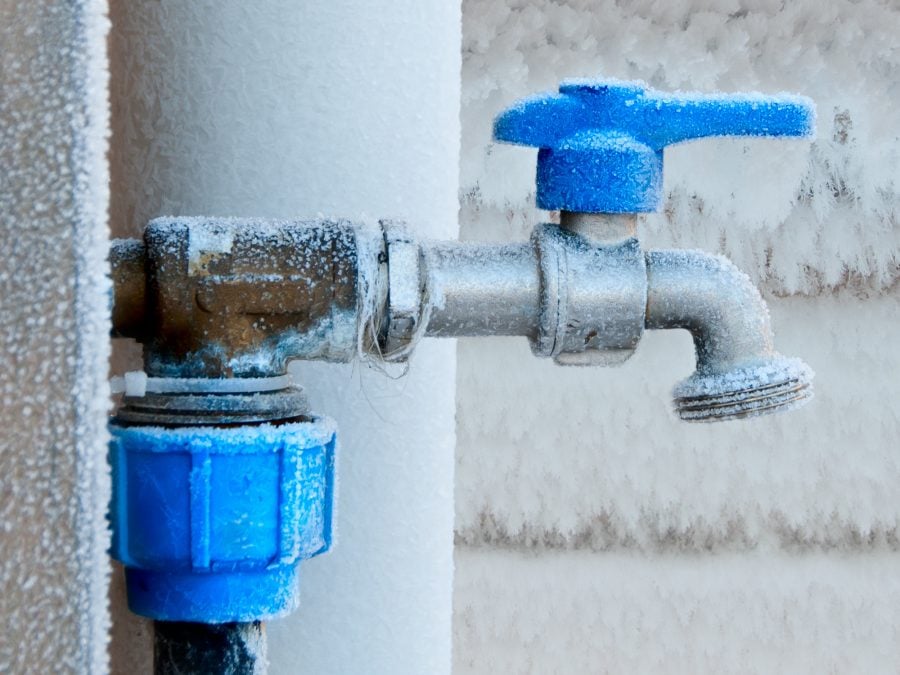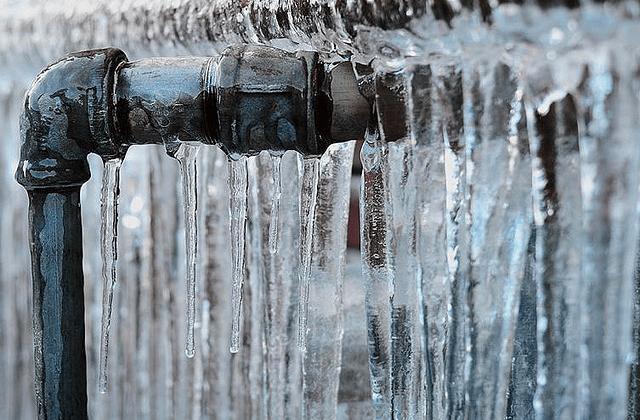Preventing Frozen Plumbing in Winter: Key Strategies
Preventing Frozen Plumbing in Winter: Key Strategies
Blog Article
They are making a number of great pointers relating to How to prepare your home plumbing for winter weather in general in this great article which follows.

Winter can ruin your pipes, particularly by freezing pipes. Below's just how to prevent it from happening and what to do if it does.
Introduction
As temperatures decrease, the threat of frozen pipes boosts, potentially resulting in costly fixings and water damages. Comprehending how to prevent icy pipelines is crucial for home owners in cool environments.
Avoidance Tips
Insulating at risk pipelines
Cover pipes in insulation sleeves or make use of heat tape to shield them from freezing temperature levels. Concentrate on pipelines in unheated or outside areas of the home.
Heating strategies
Keep interior rooms sufficiently warmed, especially areas with pipes. Open up cabinet doors to allow warm air to distribute around pipelines under sinks.
How to identify frozen pipelines
Seek reduced water circulation from faucets, unusual smells or sounds from pipes, and noticeable frost on exposed pipelines.
Long-Term Solutions
Architectural changes
Consider rerouting pipelines away from exterior wall surfaces or unheated areas. Include extra insulation to attic rooms, basements, and crawl spaces.
Updating insulation
Buy premium insulation for pipelines, attic rooms, and wall surfaces. Correct insulation helps maintain regular temperature levels and decreases the threat of icy pipelines.
Securing Exterior Pipes
Garden pipes and exterior faucets
Separate and drain pipes yard hoses before winter season. Install frost-proof faucets or cover outside faucets with insulated caps.
Understanding Frozen Pipes
What triggers pipes to ice up?
Pipes ice up when revealed to temperatures below 32 ° F (0 ° C) for prolonged periods. As water inside the pipelines freezes, it broadens, putting pressure on the pipeline wall surfaces and potentially triggering them to burst.
Threats and problems
Frozen pipelines can bring about supply of water disruptions, building damage, and expensive repair services. Burst pipelines can flood homes and create substantial structural damage.
Indicators of Frozen Piping
Recognizing frozen pipelines early can prevent them from breaking.
What to Do If Your Pipelines Freeze
Immediate actions to take
If you suspect frozen pipelines, keep taps open to soothe stress as the ice melts. Use a hairdryer or towels taken in warm water to thaw pipelines gradually.
Final thought
Protecting against icy pipes requires aggressive steps and quick reactions. By understanding the reasons, indications, and safety nets, homeowners can shield their plumbing throughout winter.
Helpful Tips to Prevent Frozen Pipes this Winter
UNDERSTANDING THE BASICS: WHY PIPES FREEZE AND WHY IT’S A PROBLEM
Water freezing inside pipes is common during the winter months, but understanding why pipes freeze, and the potential problems it can cause is crucial in preventing such incidents. This section will delve into the basics of why pipes freeze and the associated problems that may arise.
THE SCIENCE BEHIND FROZEN PIPES
When water reaches freezing temperatures, it undergoes a physical transformation and solidifies into ice. This expansion of water as it freezes is the primary reason pipes can burst. As the water inside the pipe freezes, it expands, creating immense pressure on the walls. If the pressure becomes too great, the pipe can crack or rupture, leading to leaks and water damage.
FACTORS THAT CONTRIBUTE TO PIPE FREEZING
Low Temperatures: Extremely cold weather, especially below freezing, increases the risk of pipes freezing. Uninsulated or Poorly Insulated Pipes: Pipes located in unheated areas, such as basements, crawl spaces, or attics, are more prone to freezing. Insufficient insulation or lack of insulation altogether exacerbates the problem. Exterior Wall Exposure: Pipes running along exterior walls are susceptible to freezing as they encounter colder temperatures outside. Lack of Heating or Temperature Regulation: Inadequate heating or inconsistent temperature control in your home can contribute to frozen pipes. PROBLEMS CAUSED BY FROZEN PIPES
- Pipe Bursting: As mentioned earlier, the expansion of water as it freezes can cause pipes to burst, resulting in significant water damage.
- Water Damage: When pipes burst, it can lead to flooding and water damage to your property, including walls, ceilings, flooring, and personal belongings.
- Structural Damage: Prolonged exposure to water from burst pipes can compromise the structural integrity of your home, leading to costly repairs.
- Mold and Mildew Growth: Excess moisture from water damage can create a favorable environment for mold and mildew growth, posing health risks to occupants.
- Disrupted Water Supply: Frozen pipes can also result in a complete or partial loss of water supply until the issue is resolved.
WHY CERTAIN PIPES ARE MORE PRONE TO FREEZING
- Location: Pipes located in unheated or poorly insulated areas, such as basements, crawl spaces, attics, or exterior walls, are at higher risk of freezing.
- Exterior Pipes: Outdoor pipes, such as those used for irrigation or exposed plumbing, are particularly vulnerable to freezing as they are directly exposed to the elements.
- Supply Lines: Pipes that carry water from the main water supply into your home, including the main water line, are critical to protect as freezing in these lines can affect your entire plumbing system.
- Underground Pipes: Pipes buried underground, such as those connected to sprinkler systems or outdoor faucets, can be susceptible to freezing if not properly insulated.
https://busybusy.com/blog/helpful-tips-to-prevent-frozen-pipes-this-winter/

Hopefully you enjoyed reading our excerpt on Helpful Tips to Prevent Frozen Pipes this Winter. Thank you so much for spending some time to browse our content. Sharing is caring. You just don't know, you may very well be helping someone out. We take joy in reading our article about Winter Plumbing Precautions: Preventing Frozen Pipes.
Click Here Report this page